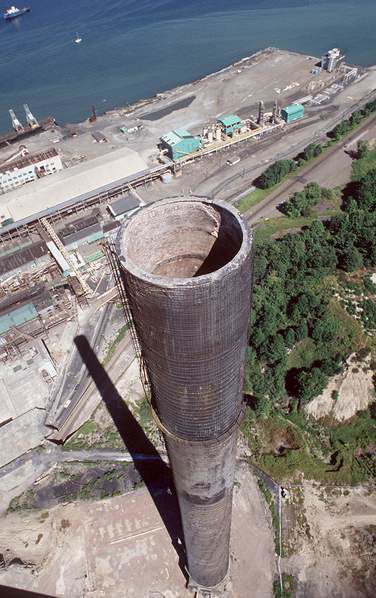Pollution case shows a need for tougher regulation, critics say
Published 4:00 am Wednesday, December 30, 2009

- This Asarco smokestack once emitted pollutants across Washington’s Puget Sound.
WASHINGTON — A 562-foot smokestack that spewed a plume of arsenic, lead and other heavy metals across 1,000 square miles of Washington state’s Puget Sound for nearly a century remains a fitting symbol of the largest environmental bankruptcy in U.S. history.
However, it also tells a cautionary tale of how a company that’s intent on shedding its environmental liabilities could manipulate the nation’s bankruptcy system.
In this instance, Grupo Mexico, S.A. de C.V., tried and failed, according to lawyers and regulators who are close to the case. It took a federal judge, however, to block what some bankruptcy lawyers call a “candy heist” that could have left taxpayers responsible for cleaning up 80 polluted sites in 19 states, a job that initially was estimated to cost $6.5 billion.
The smokestack in Ruston, Wash., once the world’s biggest, has been demolished, as has the copper smelter that fed it. The smelter was owned by Asarco, a century-old mining, smelting and refining company based in Tucson, Ariz., that once was listed on the Fortune 500. Grupo Mexico bought Asarco in 1999.
In court documents, Grupo Mexico has denied that it maneuvered Asarco into bankruptcy in an attempt to evade its environmental responsibilities. Grupo Mexico refused to comment for this story.
“Grupo Mexico tried to use a bankruptcy court to avoid Asarco’s cleanup responsibilities, and they almost got away with it,” charged U.S. Sen. Maria Cantwell, D-Wash.
Asarco officially emerged from bankruptcy earlier this month, and Grupo Mexico has paid $1.8 billion in cleanup costs. In addition to claims filed by the federal Environmental Protection Agency, 15 states — including Washington, Oklahoma, Missouri, Colorado, Arizona, New Mexico and Texas — and various Indian tribes and private parties had filed environmental claims against Asarco.
State and federal regulators say they’re more than satisfied.
Unless the laws are changed, however, Cantwell and others say that another company almost certainly will try to manipulate the bankruptcy system the way they charge Grupo Mexico did.
“This is not what the bankruptcy laws were intended for,” said John Iani, a Seattle lawyer who as a regional head of the EPA during the George W. Bush administration convinced reluctant Justice Department lawyers that Grupo Mexico was trying to pull a fast one.
Asarco had seen better years when Grupo Mexico bought it for more than $2 billion in a highly leveraged buyout. Owned by one of Mexico’s richest families, Grupo Mexico had its eyes on Asarco’s “crown jewels,” a majority interest in two of the world’s richest copper mines, in a Peruvian desert where it hadn’t rained since the time of the Spanish conquistadors.
From the get-go, Iani and other regulators smelled trouble. They were convinced that Grupo Mexico’s sole goal was to gain control of the Peruvian mines and then nudge Asarco into bankruptcy to avoid billions of dollars in environmental cleanup costs.
Over the past four years, the case has unfolded in a bankruptcy court in Corpus Christi, Texas. Early on, Judge Richard Schmidt effectively stripped Grupo Mexico of its control of Asarco.
In the end, Schmidt accepted Grupo Mexico’s $2.2 billion plan. In his decision, Schmidt suggested that Grupo Mexico finally offered a serious reorganization plan in an effort to limit its liability in the Peruvian mine case.
Elliott Furst, who handled the case as a senior counsel in the Washington State Office of the Attorney General, said the state was “absolutely satisfied” with the way the case turned out, and it also may have been a wake-up call for federal regulators and Congress.
“It’s an example of how people can skirt their responsibilities, and why we need tougher regulations,” Cantwell said.





